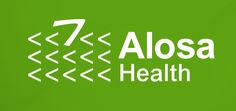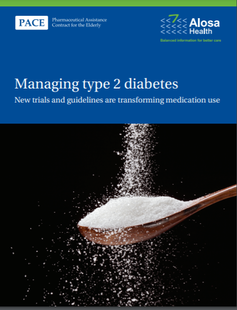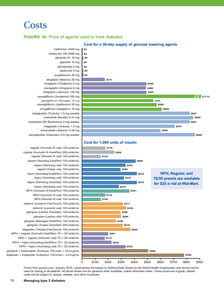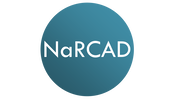|
An interview with Ellen Dancel, PharmD, MPH, Director of Clinical Materials Development, Alosa Health. Ellen completed her pharmacy practice residency at Massachusetts General Hospital and later completed her Master of Public Health at Boston University. by Anna Morgan, MPH, RN, PMP, NaRCAD Program Manager Tags: Materials Development, Detailing Visits, CME  Anna: Hi Ellen! Thanks for joining us today – we’re excited to hear about your 6+ years of experience developing impactful detailing materials. Can you walk us through the process you take when beginning to design a detailing aid? Ellen: Absolutely! The most important question to start with is, “who are you detailing with this material?” You also want to consider who is driving the goals of the intervention. Is there something your funder wants you to communicate in terms of key messages or is there new clinical information to convey? You then need to think about how to engage subject matter experts (SMEs). We work with an amazing endocrinologist for our diabetes modules and often ask, “what do you wish a primary care provider (PCP) knew before they referred a patient to you?” Having a specialist’s perception on what concerns they see in practice is key. We’re also fortunate to have access to focus groups at Alosa. We engage prescribers who receive our content to understand their needs on a topic. These peer-to-peer conversations are hosted by one of our clinicians. We also utilize our detailers’ years of expertise, gaining their insights on the materials. We use these two distinct focus groups to provide feedback on the content and messaging as well as the layout and visuals of our draft materials. We then take all this information and add it to the available literature to create a final detailing aid.  A screenshot of a cover page A screenshot of a cover page Anna: These first steps are crucial when thinking about developing materials. Let’s talk about the layout of the detailing aids. What does that look like? Ellen: When it comes to laying out the detailing aid, Alosa has a certain look and feel that we always use that’s part of our brand. The front of the document is a cover page with a title and graphic. Our graphic designer does a tremendous job of taking a concept that isn’t quite fleshed out and making sure that the end product is streamlined. A title that works well is something that is very clear, simple, and focuses on the overall message. Our team selects images for the cover page that relate to the topic but also tend to generate conversation. The back has our logos and a description of the authors. On the inside, we start with a “why do I care?” section, so we can explain why the topic we’re focusing on is of importance to the clinicians being visited. The next page is often a summary of the content that is within the detailing aid. A summary could be an algorithm for treatment or a graphic for a framework for thinking about how to approach management (e.g., the four stages of heart failure). This is followed by the evidence, data, and tips to support a PCP in order to put the key message into practice. We follow that with a cost page, so the clinicians are informed when presenting new medications to patients. Lastly, we include a reminder page that summarizes key points.  A screenshot of details on cost of medication A screenshot of details on cost of medication Anna: Wow! It’s so helpful to hear about the process your team uses for laying out content in the detailing aids at Alosa. From start to finish, how long does this entire process take? Ellen: It really depends on the topic. For example, if we’re updating a topic with a SME who has previously worked with the Alosa team, then we’d expect a timeline of around two to three months. For something new, such as a primary palliative care module or a serious illness module, we’d plan for a timeframe closer to four to six months, because we need the time to really look at the evidence and see how it shapes what we want to accomplish in the field. We also need the time to understand what our PCPs are interested in through feedback from a focus group and informally from our detailers. For AD programs with shorter timelines, we’ve found the resources at the CDC to be incredibly useful, such as the adapted patient materials for our latest immunizations module. There’s also a lot of academic detailing programs that have publicly accessible materials. Some may even allow you to use their graphics if you request permission or cite appropriately.  Anna: It’s so important to allow enough time to not only create and build a detailing aid, but also work through multiple revisions of it. Ellen: I couldn’t agree more. When I created my first detailing aid, it took me a week to even come up with the first draft, which was then subsequently torn apart. My draft looked nothing like what we ended up with at the end of the process. Programs need to plan for time for back and forth communication and to engage as many viewpoints as they can. Our modules are accredited for continuing medical education and we have reviewers assess the detail aid to ensure accuracy. We also make sure that our detailers, who will be using the material in the field, have an opportunity to try out the materials. We often end up changing key graphics that we thought were fantastic but turn out to not be effective during the detailing visit through this process. Anna: When thinking about the gold standard for creating a detailing aid that is accessible to both detailers and clinicians, what comes to mind? Ellen: It’s really a marriage of evidence-based recommendations and clinical practice. We’re trying to find a way to bridge recommendations in the literature with usable tools for a busy primary care provider’s practice. We make sure we’re providing the best and latest evidence in a way that can be helpful for the primary care provider without them having to do a complete system redesign. Materials should be streamlined and allow clinicians to be flexible in their approach by offering different options in adopting the key messages.  Anna: Thanks for walking us through this process, Ellen- what would you say are the key tips/takeaways for detailing programs who are just starting to do this? Ellen’s Tips for Creating Materials
Learn more by checking out the Alosa website, and these detailing aid building tools and examples from the NaRCAD team. Have thoughts on our DETAILS Blog posts? You can head on over to our Discussion Forum to continue the conversation!  Biography. Ellen was a pharmacist at the Massachusetts General Hospital for ten years prior to joining Alosa Health, serving in various leadership roles. She received her MPH in epidemiology from Boston University where she worked on a project looking for potential economic efficiencies in the global donor-funded antiretroviral market. As Director of Clinical Materials Development, she leads the development of evidence-based, academic materials, in partnership with clinical experts, and oversees the production of clinical content from concept to completion. Comments are closed.
|
Highlighting Best PracticesWe highlight what's working in clinical education through interviews, features, event recaps, and guest blogs, offering clinical educators the chance to share successes and lessons learned from around the country & beyond. Search Archives
|
